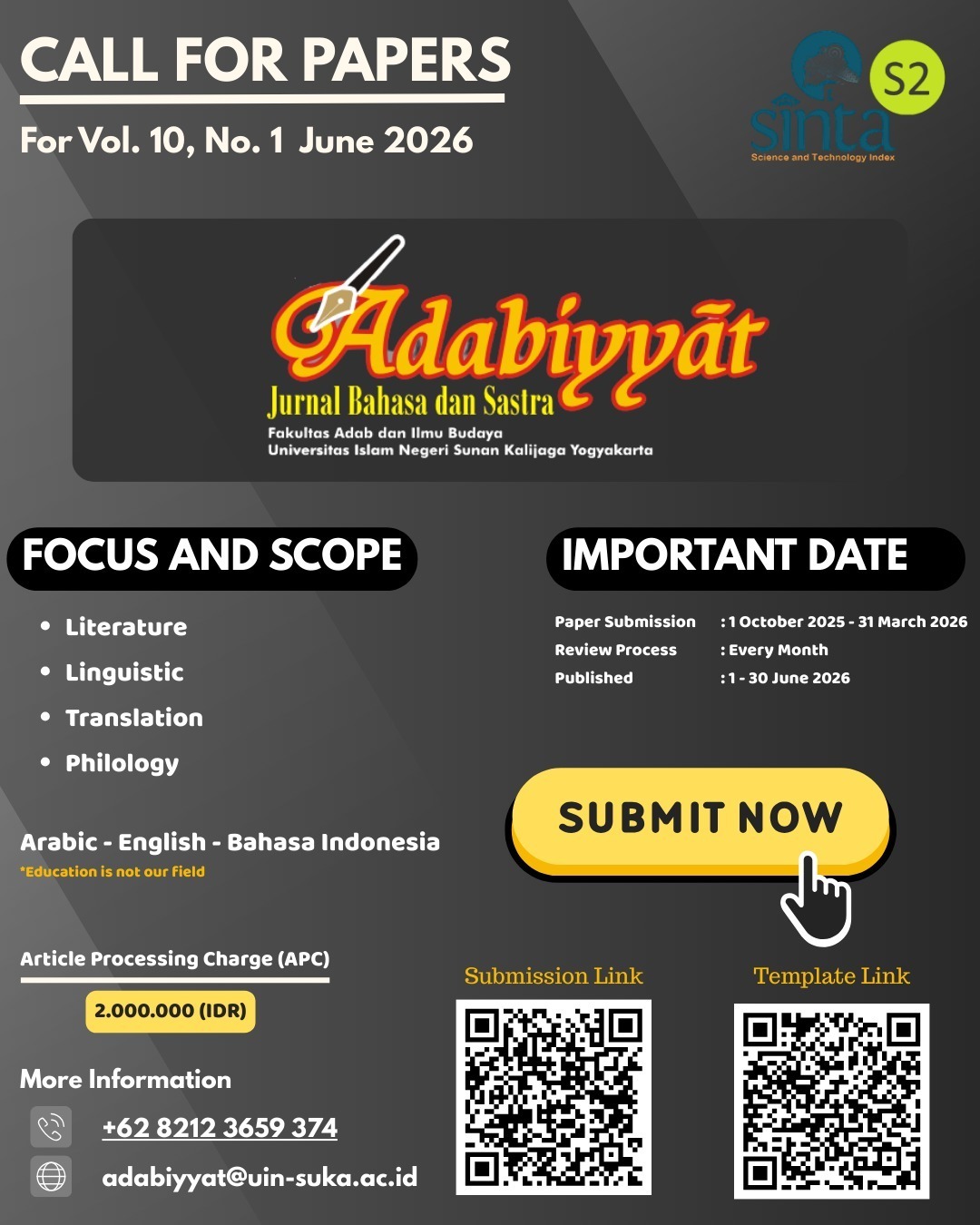MASKULINITAS, KEKERASAN, DAN NEGARA DALAM THE RAID: REDEMPTION
DOI:
https://doi.org/10.14421/ajbs.2013.12201Abstract
Contestation of dominant masculinity in Indonesian Popular Culture influenced by the New Order can still be seen in its cinematic production. The legacy of The New Order echoes through themes of state’s violence and masculinity. The Raid: Redemption, as a huge international success, depicting vulgar violence done both by the state and the gangsters is very important to be analyzed. As the form of collective dreams, the contestation of masculinity and violence of the state and the gangster in the movie reflects the real social condition. Through historical perspective the state and the gangster are more like binary opposition; inseparable but opposing each other. The Gangsters became the state’s Frankenstein monster. On one side the state cannot allow the crime the gangsters do, but on the other the state keeps in creating the gangsters to the dirty jobs that state cannot do. Psychoanalytically speaking, their relationship resembles a father and a bad son. Those gangsters are “the son” and the state is “the father”. The effect of the state’s treatment to the gangsters can still be identified long after the down fall of the era that created it.
Downloads
References
Anderson, Eric. 2005. The Game: Gay Athletes and the Cult of Masculinity. New York: State University of New York Press.
Brown, David dan Ian Wilson. 2007. “Ethnicized Violence in Indonesia: The Betawi Brotherhood Forum in Sersan Jakarta”. Working Paper No. 145. Murdoch Univ Press: Australia.
Clark, Marshall. 2004. “Men, Masculinity, and Symbolic Violence in Recent Indonesian Cinema”. Journal of Southeast Asian Studies, Vol. 35.
Collinson, David L. 1988. “Engineering Humor: Masculinity, Joking and Con-flict in Shop-floor Relations”, Organization Studies April. vol. 9 no. 2, 181-199.
Connell, R.W. 2005. Masculinity. Second Ed. Univ of California. USA.
Kimmel, S Michael. 1994. “Masculinity as Homophobia: Fear, Shame, and Silence in the Construction of Gender Identity”. Theorizing Masculinities. New York: Sage Publication.
MacKinnon, Kenneth. 2003. Representing Men: Maleness and Masculinity in The Media. New York. Oxford Univ Press.
Paramadita, Intan. 2007. “Contesting Indonesian Nationalism and Masculinity in Cinema.” Asian Cinema, Vol. 18. Issue: 2.
Sen, Krishna. 1995. “Represion and resistance: Interpretation of the Feminin in New Order Cinema”, dalam Culture and Society in New Order Indonesia, ed. Virginia Hooker. Kuala Lumpur, Oxford Univ Press.
Sen, Krishna. 2010. “The Language of Violence in Indonesia Cinema”. New Cinemas: Journal of Contemporary Film. Volume 8, Number 3.
Downloads
Published
Issue
Section
License
- Adabiyyāt: Jurnal Bahasa dan Sastra publishes all articles entirely in full text.
- It is permissible for readers to download and to use it for scientific purposes and scientific dissemination.
- The author can re-publish the article that has been published by the Adabiyyāt: Jurnal Bahasa dan Sastra after obtaining written permission from the editor. This letter can be obtained by submitting a request letter for permission to republish the article to Adabiyyāt: Jurnal Bahasa dan Sastra via email adabiyyat@uin-suka.ac.id. In the second publication, the author is required to include information that the article was firstly published by the Adabiyyāt: Jurnal Bahasa dan Sastra.









